
On Finding Happiness in Work that You Love: The Art of Mr. Rodrigo Avila
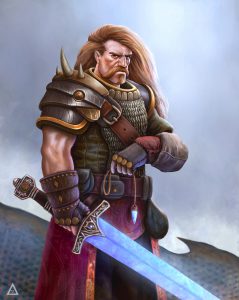 We have heard all of it before:
We have heard all of it before:
Art is not a fruitful endeavor. You’ll never get rich pursuing a career in art.
And sadly, most dreamers would believe the words of the unremarkable and try to shake themselves from slumber. For good reason, these dreamers who were once motivated by their passions would be scared off by the uncertainty of personal economic conditions.
But brave and noble is the artist who defends his true love. As with all who love the reward is always handsome. No one would know this better than Mr. Rodrigo Avila:
Today, art is my profession and being able to work with what you love is the best feeling.
Indeed, the industry could use more thinkers like Mr. Avila. This kind of mindset allows for greater growth for the craft and a boost for the collective artists’ morale.
So let us sit down and get to know ZBrush artist Mr. Rodrigo Avila and find out how artists like him make amazing contributions to the 3D industry by being uncompromising and purposeful.
Xeno Creatives (XC): ZBrush changed the ballgame. What was it like using the software for the first time? What processes did you have to learn to be skilled in it?
Rodrigo Avila (RA): I used to work as an illustrator and concept artist before getting to know ZBrush. My first contact with it was in 2014. I did not understand anything about the software and did not know where the commands were. My English at the time was horrible.
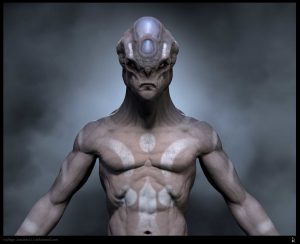 Everything changed in my life when I participated in a giveaway that Rafael Grassetti did on his Facebook page. I was one of the winners of the giveaway, I won the Gumroad ”Design and Anatomy Package” in 2015.
Everything changed in my life when I participated in a giveaway that Rafael Grassetti did on his Facebook page. I was one of the winners of the giveaway, I won the Gumroad ”Design and Anatomy Package” in 2015.
From that day on, my understanding with ZBrush and my artistic life changed a lot. I began studying his course every day, it was hours of study and dedication that helped me a lot in my understanding of human anatomy today.
In 2016 I decided to take a classes at Melies School, a great school in my country. It was an online class with the teachers Junior Guerhard and Danilo Athayde. So with this course I was able to learn even more about the ZBrush modeling process and about digital sculpture. So in this period I did not play video games and reduced the use of social networks, so that I had concentration and focus on my studies.
In that same period I was mentored by Alex Oliver who gave me great tips and advice that helped me a lot in my artistic life.
XC: Does ZBrush help you progress further in your craft?
RA: ZBrush helped me a lot in my work, with this new version at 4R8 the software is more dynamic. It has become my base software for almost everything in my creation process.
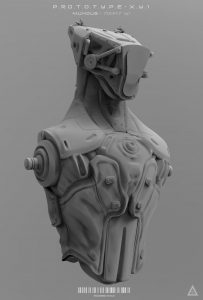 Before this, I drew some concepts directly on Photoshop. These days, I model on ZBrush and then render a pose to elaborate some more concepts of the character on Photoshop.
Before this, I drew some concepts directly on Photoshop. These days, I model on ZBrush and then render a pose to elaborate some more concepts of the character on Photoshop.
XC: When did you know that you’ll be using ZBrush as your primary tool to create 3D art? Would you want to expand to other media or do you want to just focus on it? What were there other media that you explored?
RA: ZBrush was a software that I always wanted to learn, I think the moment was when I won the Gumroad of Rafael Grassetti. He’s an artist whom I admire a lot. After practicing his course, I realized that ZBrush was the software I wanted to use and the 3D industry is what I wanted to follow. After learning ZBrush, I studied other software. I learned to use Maya, Mari, Substance Painter, Marvelous Designer (fantastic software for creation and simulation of clothes) and of course the rendering software that I use at the moment that is the Solid Angle Arnold.
XC: How is the mastery in human anatomy important when working with ZBrush?
RA: I think if you are an Organic Concept artist, learning anatomy is the most important; these are fundamental for both film industry and games. Most companies will ask for this.
XC: Do you see yourself working in the movie and television industry?
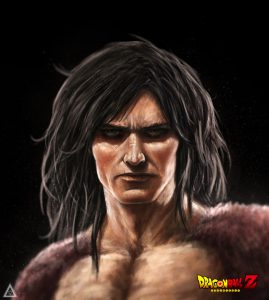 RA: Yes, I see myself working in the film and television industry. It’s a great dream to work on this industry.
RA: Yes, I see myself working in the film and television industry. It’s a great dream to work on this industry.
XC: Was delving into the craft really a passion to begin with or a mere necessity?
RA: Art has always been present in my life and has always been my passion; I always liked to draw. I started my studies at the age of 10 when I took a course in drawing and painting with colored pencils with artist Mário Freire. As a kid I loved “Jurassic Park” and I drew dinosaurs all the time among other subjects as well.
XC: I’ve always been passionate about movies and games and I never imagined I could ever work for any of these art industries. I thought it was something that was impossible to come and learn, especially in my country. Over time, I discovered that it was possible to penetrate these two large industries
RA: My parents, my sister and my grandmother have always motivated me to draw and pursue my goals and dreams. Some family members don’t—thought it was a waste of time and would not be lucrative.
Today, art is my profession and being able to work with what you love is the best feeling.
XC: Your works over at ArtStation are AMAZING. It was hard to pick favorites. Do you have favorite pieces? What are they and why?
RA: I think they are all my favorites because with each one of them I learned something. But my two favorite pieces are the ”Batman Suit” and the ”Lady Nose”. The “Batman” for being my favorite hero and it was a redesign made for the Brainstorm Challenge. On the other hand, I liked “Lady Nose” for being the first work of mine to 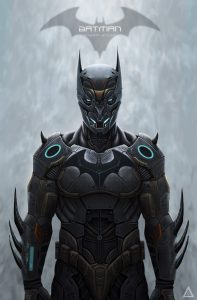 get into the ”Picks” of ArtStation, and also for learning to use other software and to have a better workflow for my work.
get into the ”Picks” of ArtStation, and also for learning to use other software and to have a better workflow for my work.
XC: What other pieces do you want to create?
RA: I want to create “The Saint Seiya” to be more realistic. I also want to create new characters for the “Star Wars” universe.
XC: Whom can you consider your influences? What attracted you to them?
RA: I consider my influences the artists of my country like Rafael Grassetti, Alex Oliver, Glauco Longui, Igor Catto, Gilberto Magno, Fausto de Martini and Kris Costa. And also international artists such as Maciej Kuciara, Alessandro Baldasseroni, Ian Springgs, Dan Roatley, Adam Skutt, Frank Tzeng and Vimal Kerketta. They are my influences on anatomy; it is fantastic how they model and understand, render and observe the details to anatomy. They are artists that when I need references, I always look for their work. They motivate me to learn more.
XC: Do you also see yourself in Game Character Design?
RA: Yes. I still want to work as a Game Character Designer for some of the companies I’ve always dreamed of working in such as, Naughty Dog, Santa Monica Studios and Blizzard. I will reach this goal.
XC: If you weren’t a 3D artist today, what do you think you’d be specializing in?
RA: I think I’d be a card game illustrator, like “Magic: The Gathering”, Hearthstone or HEX TCG.
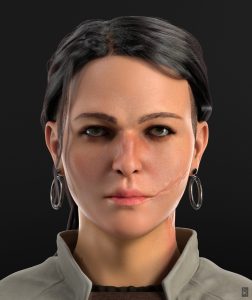 XC: What advice or message can you give young aspirants wanting to enter the craft/industry?
XC: What advice or message can you give young aspirants wanting to enter the craft/industry?
RA: Never give up on your goals. Study very hard, even if a few moments you want to give up, or if someone discourages you, do not give up. Think that these would serve to motivate you to go further. Believe! Look at other artists and see that it is possible to get where they arrived and that they also went through the same things as you. Do what you enjoy, try to listen to your heart because working with what you like is the best feeling.
Truly inspiring, Mr. Rodrigo Avila is one artist we should all watch out for. He is a great mover of the industry and one whom we should all vie to become.
Want to see more of his amazing works? Click here!

